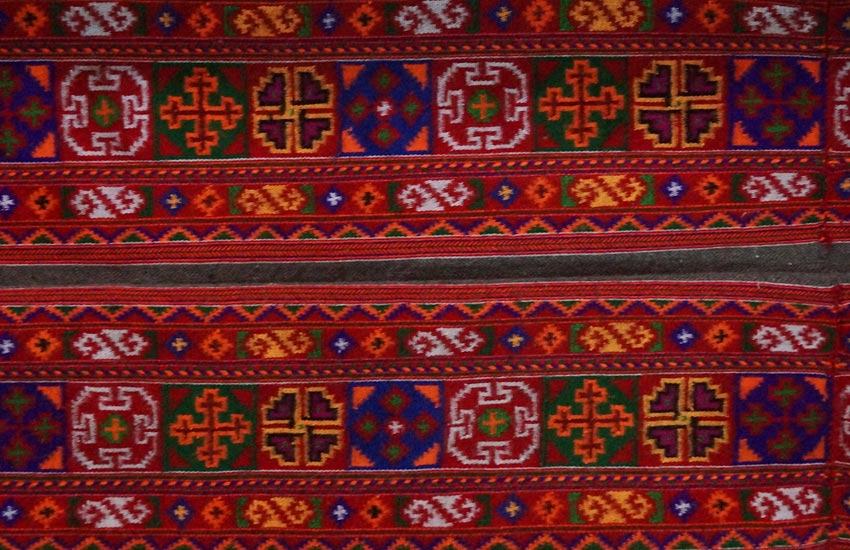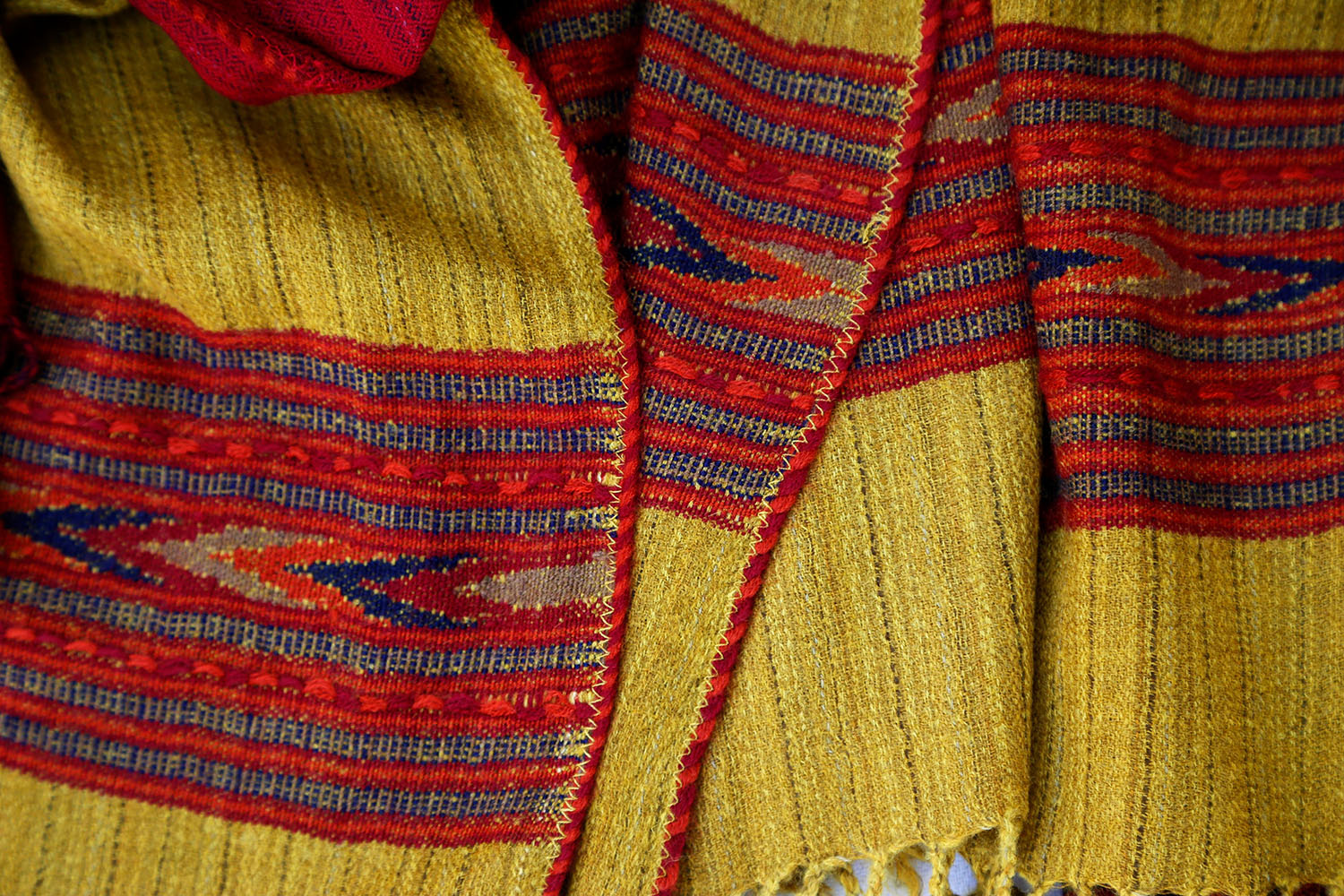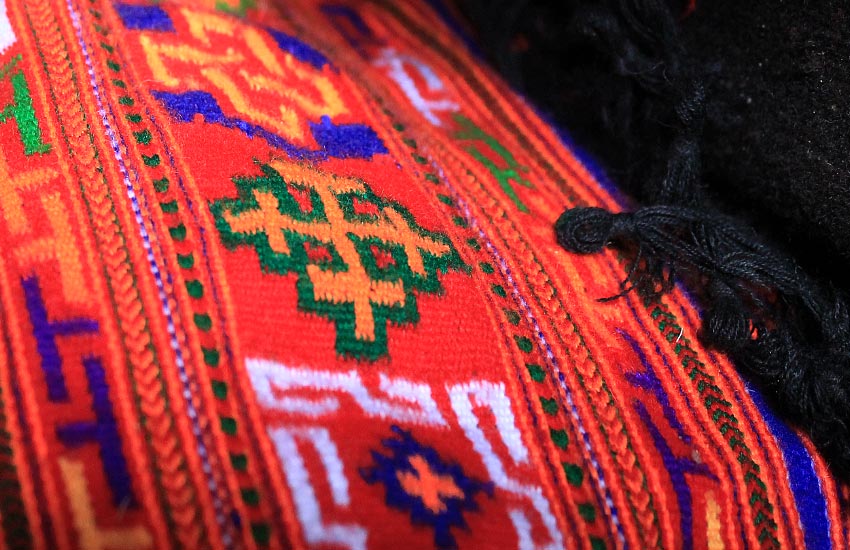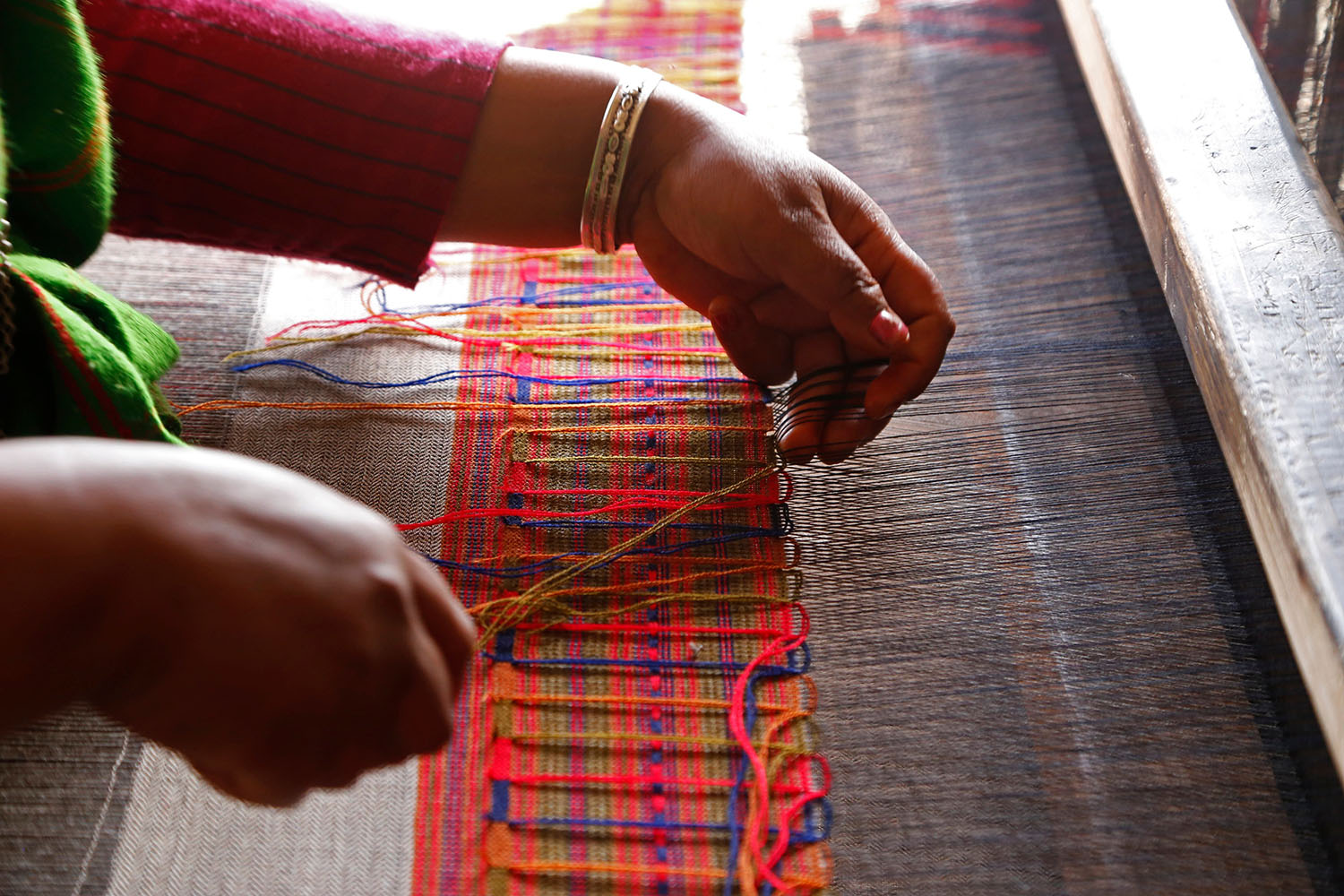India has a rich weaving culture which shows the diversity of regions and cultural histories. From the silks of Banaras to Khadi of Gujarat to the woollen weaves of the Himalayan region, the artistry of textile industry is vast. One such weaving culture is of Himachal Pradesh where it is not just a form of art but way of life connected with social and economic features. Weaving is not only providing clothing but a medium of cultural identity. From Kinnaur to valleys of Kullu each region has a distinct style, motifs and techniques.
It has been passed down through generations and has also evolved in its continuity and adaptations. The two most prominent places as weaving centers are Kullu and Kinnaur. These areas were also part of the older trade routes which would have connected them to the weaving traditions from Central Asia. Even today, weaving is central to their economy and culture. The craft has mostly been carried by women artisans blending the delicate art of wool and colour.
Origin

The early inhabitants of this region faced long and harsh winters and began weaving wool from sheep and goat for making blankets and clothes against the cold. Over the time this evolved into an intricate art which was influenced by the culture and the people. Kinnaur, Tibet, Kullu and Ladakh influenced the weaving across the state and also led in incorporating of new patterns, colours and weaving techniques.
Another factor which was important in hilly regions of Chamba and Kangra were the royal patronages which encouraged this skill of artistry. The artisans of the court not only crafted for practical use but also for ceremonies, religious rituals and gifts. The Mughal influence also introduced delicate embroidery and redefined designs which were then integrated with the local weaving practises. In the colonial period, these woollen products and embroidered textiles gained significance outside the local markets and were also exported. There were also organizations formed which would help support the artisans and guarantee fair wages. The Kullu Shawl received Geographical Indication(GI) in 2006 and Kinnauri Shawl in 2010 which recognized the cultural authenticity and craftmanship.
Famous Weaving Items
Kinnauri Shawls
Kinnauri Shawls are one of the renowned products of Himachali weaving. The borders are intricate and are often inspired by Buddhist motifs and geometric patterns. The weaving done in these shawls is more refined ad shows the fine and elaborate borders. These shawls are typically in natural colours such as grey, white and black and embroidered by green, yellow and red on the borders. Similar to the Kullu shawl, these shawls are also worn as an important part of ceremonial attire and are a mark of social identity in the Kinnaur region. Handlooms in Kalpa, Nichar and Sangla continue to produce this textile, passed down through generations.

Kullu Shawl
Kullu shawls are known for their geometrical designs and colour contrasts. These shawls are primarily woven in sheep wool, angora but silk blends are common these days. The shawl as the name suggests is primarily crafted in the Kullu Valley. The ‘pattas’ of these shawls have the motifs of primarily triangles, floral patterns and are also inspired by nature They are often gifted on occasions like weddings and festivals. Its cultural value was recognised when Geographical Indication( GI) was given in 2004. The craft is continued by the artists who keep the tradition alive while also adapting to the newer trends.

Thobis
Thobis are rectangular wraps or shawls which are particularly worn by women. They are thicker than a shawl and are designed specifically for protection against the harsh winters. The thobi might be made in a single colour but there are times that there are subtle geometric or floral borders. The making of thobis is largely household based and is carried out within the households and passed down generations which makes this art community oriented.

Loi (Chadar)
Loi is a garment worn daily by the men in the rural areas of the state. It is used as a practical garment worn by shepherds and farmers and is usually woven with coarse wool, lightly stripped. They are made in grey, brown or off-white and worn commonly for outdoor activities of grazing, farming or travelling across mountains. They are a common sight while exploring Himachal and connects the textile art and everyday life.

Motifs and Patterns
The motifs weaved on the garments reflects the influences that have shaped the Himachali culture. These elements are often inspired by the nature and spiritual culture of this region. Kullu Shawls are known for their bold geometric pattern which includes diamonds, triangles and floral pattern. Kinnauri Shawl on the other hand has intricate borders which includes swastika, flowers with a blend of Buddhist iconography. Thobis and Loi have subtle borders and stripes respectively and are designed for warmth than as a visual piece.
Significance

Weaving is not just a traditional skill but an integral part of the state. For many of the families weaving has become source of income. Women have been contributing significantly by preserving the knowledge. Cooperative societies have also helped artists come together and share designs. This has also helped them to continue with the traditional way of art and also encouraging innovation.
Culturally woven items hold a special place in rituals and ceremonies. Shawls are exchanged as token of love and respect. Religious festivals too include woven drapes by draping the sacred. In modern Himachal Pradesh, weaving also helps as a medium of cultural statement. As global influences grow stronger, the preservation and promotion of traditional crafts have become important for maintaining regional identity. By proudly wearing and gifting woven products, Himachalis keep alive their artistic heritage and continue to show their unique place within the diverse tapestry of Indian culture.

Conclusion
These weaving traditions are more than just pieces of garment, they are the cultural hallmark of the Himachal’s history and life. These textiles tells us stories of the past and are also evolving as the time goes by. What initially began as a way to protect against harsh winters is now a celebrated craft. Moreover, with the GI status granted to Kullu shawl and hopefully to other garments as well, it would help with the authenticity of this process.
In a time of industrial production and synthetic fabrics, theses weaving techniques remind us of the beauty of slow and mindful creation. These woven threads shows that art, culture and sustainability go hand in hand. These are not just functional garments but the artistic legacies to be seen, admired and celebrated.
References
https://www.tribuneindia.com/2011/20111211/spectrum/main3.htm
https://thebetterindia.com/400191/himachal-pradesh-weaving-kullu-shawls-chamba-rumals-himachal-day/
https://nopr.niscpr.res.in/bitstream/123456789/569/1/IJTK%207(1)%20(2008)%2056-61.pdf




